Technology
Beta Technologies unveils first passenger carrying electric aircraft
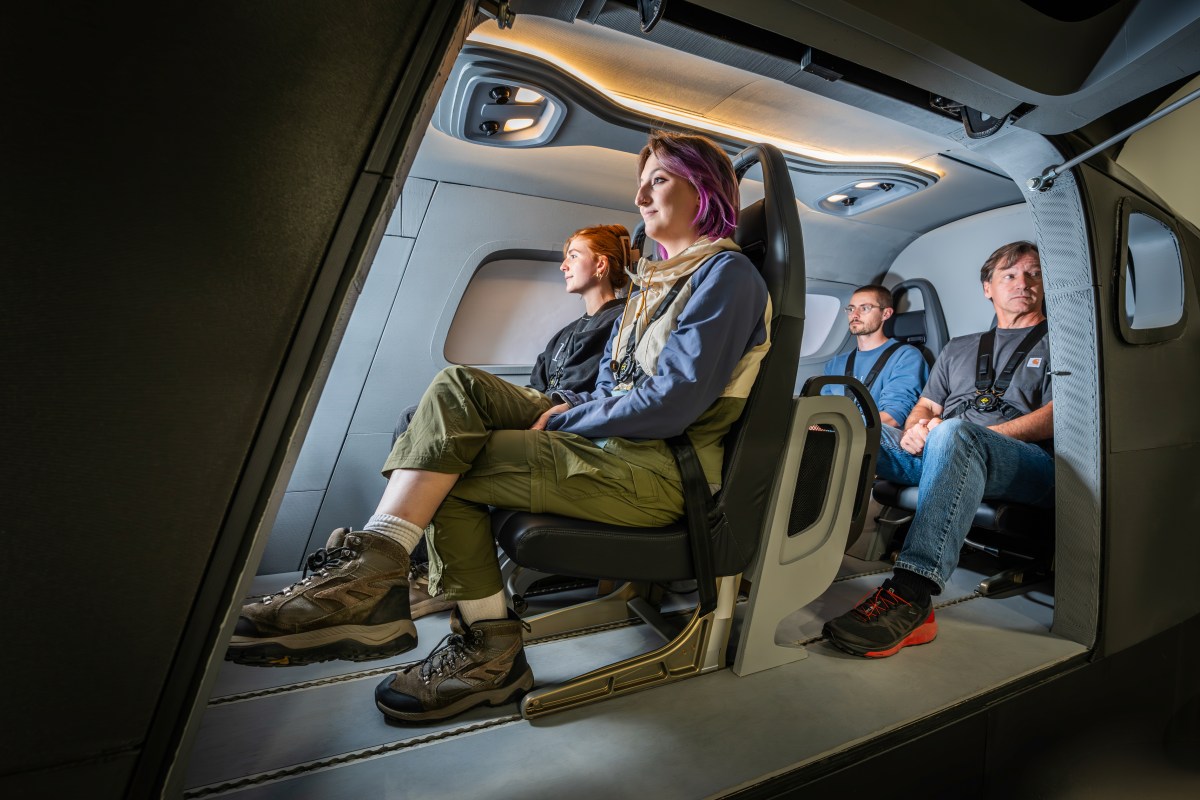
Beta Technologies unveiled Monday the next electric aircraft in its lineup — a passenger-carrying version of its ALIA vertical takeoff and landing and fixed-wing vehicles.
Electric vertical takeoff and landing (eVTOL) vehicles don’t rely on a runway, whereas fixed-wing aircraft do.
The Vermont-based startup, which has raised over $860 million in equity to date from heavy hitters like Amazon’s The Climate Pledge, is pursuing electric aviation a little differently, and more discreetly, than others in the industry. Unlike competitors Joby Aviation and Archer Aviation, Beta doesn’t want to operate its own urban air taxi network. Rather, Beta has positioned itself as the OEM that will sell aircraft and charging solutions to a host of customers.
So far, Beta has secured customers across defense, cargo delivery, and medical logistics – like United Therapeutics, UPS, Air New Zealand, and the U.S. Air Force – with a plan to launch in those markets by 2025. Customers like Archer rely on Beta’s charging network, which consists of 34 active sites, with more than 50 sites in progress.
“Flying passengers has always been a part of the plan,” Kyle Clark, Beta’s founder and CEO, told TechCrunch. “We designed everything in the aircraft from a safety and space configuration standpoint to accommodate passengers. It just made more sense, from a certification and customer acquisition standpoint, to first focus on medical and cargo, and then go to passenger,” he added.
Beta hasn’t yet built a full passenger-carrying prototype, but the concept relies on much of the same design and engineering as Beta’s existing models. Clark says this creates a streamlined path to certification, manufacturing, and commercialization.
The biggest notable differences are that the passenger variant has more windows so people can look outside, and the interior features five seats plus a cabin for the pilot, a luggage compartment, and “some accouterments for people in the back to be comfortable,” like light switches and ventilation controls, according to Clark.

All versions will be able to carry around 1,400 pounds, and in some cases they already are. Beta’s aircraft has already tested cargo-carrying missions for the military, and Clark says the startup has more flight hours than any other company in the industry.
“I contend that we will have tens, if not hundreds, of cargo aircraft flying with tens of thousands of flight hours, generating the most important thing in aviation, which is trust in the safety of the product, before we start flying passengers,” Clark said.
“I believe this strategy will actually have us flying passengers before anybody else because of the trust that we developed and the regulatory path we’ve chosen to get us through those wickets faster.”
Clark estimates that Beta’s aircraft are 13 to 14 months away from Federal Aviation Administration (FAA) certification. Today, Beta has secured a “market survey ticket,” which allows the startup to fly with potential customers so their pilots can test and evaluate the aircraft.
And that strategy has already helped secure customers in the passenger arena. On-demand aviation startup Blade, which today helps the wealthy book helicopters or seaplanes to beat the traffic, placed their financially backed order for up to 20 of Beta’s eVTOLs in 2021. Other customers include aviation company LCI, which will use Beta’s aircraft to transport guests to the Aria Hotels in Greece, and Helijet, which has placed a firm order on four eVTOLs with an option to buy four more for cargo and passenger missions.
Beta is gearing up to fill those orders and more over the next couple years. The company built its first aircraft in a prototype facility, but in January, Beta opened the doors to its production facility in South Burlington. Clark said the FAA has kept a tight watch on production, which means “it’s not rocket fast,” but he expects the facility to produce hundreds of aircraft in the next year and a half. In four years, Clark expects the facility to hit a maximum capacity of 300 aircraft per year.
Clark is most excited about a future in which electric aviation can bring down the cost of regional flight significantly, allowing people who normally have to drive two to three hours to reach a commercial airport to instead get there within minutes without breaking the bank.
He noted that short regional flights today are so expensive because jet engine fuel is pricey and so are the recurring maintenance costs for jet engines themselves.
“When you go from a turbine or jet-powered aircraft to an electric aircraft, you can effectively half the cost of carriage,” Clark said. “That opens up about 10 times more markets for transporting people.”
Correction: A previous version of this article stated Beta had 20 charging sites active based on an old number the company provided to TechCrunch.
Technology
‘ever present’ personal AI assistants are coming
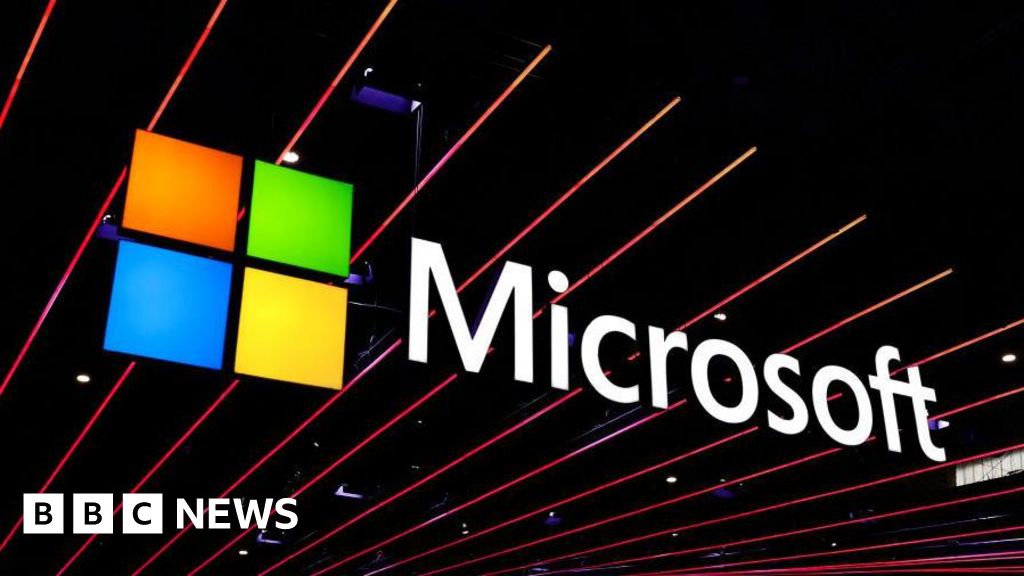
Artificial Intelligence (AI) assistants with “really good long-term memory” are about a year away, according to Microsoft’s head of AI, Mustafa Suleyman.
Products which can recall conversations, projects and problems will encourage users to invest more time and share more of their personal history with them, he said in an exclusive interview with the BBC.
“I think we’re moving to a fundamentally new age where there will be ever present, persistent, very capable co-pilot companions in your everyday life,” he added.
Critics have voiced strong concerns around this level of integration, including data security, privacy, the possibility of AI tools giving bad advice or wrong information, or displaying inbuilt bias towards the person they are supposed to be helping.
But AI supporters argue that in order to be truly useful, these tools have to be deeply embedded into our lives: that they can only be really helpful if they know the history and context behind what they are being tasked to do.
For example, an AI diary manager can only organise your diary if it can access that diary, edit it, and retain information about your activities.
Mr Suleyman argued that many people’s privacy expectations have changed over time.
He said that devices such as TVs, laptops, phones, in-car cameras and earbuds are already “recording continuously everywhere” in ordinary environments, and gave a further example of an iPhone feature called Live View in which video and audio is recorded at the same time as a photo is taken.
“Most people love that feature,” he said.
“Some people turn it off but that’s a very distinct shift in the default expectation of what a photo is.”
He added that the benefits of this kind of tech, whether people felt they could control their use of it, and whether they trusted the provider of it, were important factors in deciding whether to embrace it.
Microsoft has invested billions of dollars in OpenAI, the creator of ChatGPT, and has emerged as a market leader as the tech giants jostle in the race to develop and control the powerful and rapidly evolving technology.
But some research suggests people are not consistently using it. A poll published by the Reuters Institute in August found that 29% of people in the UK that it spoke to had used ChatGPT, but only 2% used it every day.
Mr Suleyman conceded that perhaps consumer AI tools would never be as globally popular as the smartphone.
“Maybe this is different to the smartphone,” he said.
“Nearly 90% of the planet has a smartphone. Maybe that will be different. Maybe 50% will reject [AI tools}.”
But he added that so far, AI had been the fastest growing and adopted technology in history, despite its potential risks.
He strongly rejected the idea, posed by many industry watchers including Jim Covello, head of stock research at Goldman Sachs, that AI might turn out to be a bubble, like some tech trends before it.
He told me about a woman he met who said she had set up her business using guidance and motivation from a chatbot he developed called Pi.
“We are clearly producing personalised, interactive knowledge at your fingertips at zero marginal cost,” he said.
“The idea that this could be a bubble is utterly beyond me.”
Microsoft has today unveiled a range of new additions to the tech giant’s AI assistant range CoPilot, including a voice function, a daily news digest and a slower chatbot for more difficult or in-depth questions called Think Deeper.
It also includes CoPilot Vision, a tool which will sit within its Edge web browser and, when activated, observe web pages and “assist” with online activity.
The firm says Vision will not record or store data, has to be switched-on manually and will close at the end of each browser session.
Microsoft says it has chosen to limit which sites it will work with and there is as yet no release date for it.
In the summer the tech giant paused the release of an AI tool called Recall, which takes screenshots every few seconds in order to help users find things they were looking at or working on previously, following a backlash from privacy campaigners and enquiries from the UK’s data watchdog about it.
It will be re-launched in November with additional security measures.
Servers computers
RackSolutions 18"Server Rack Drawer
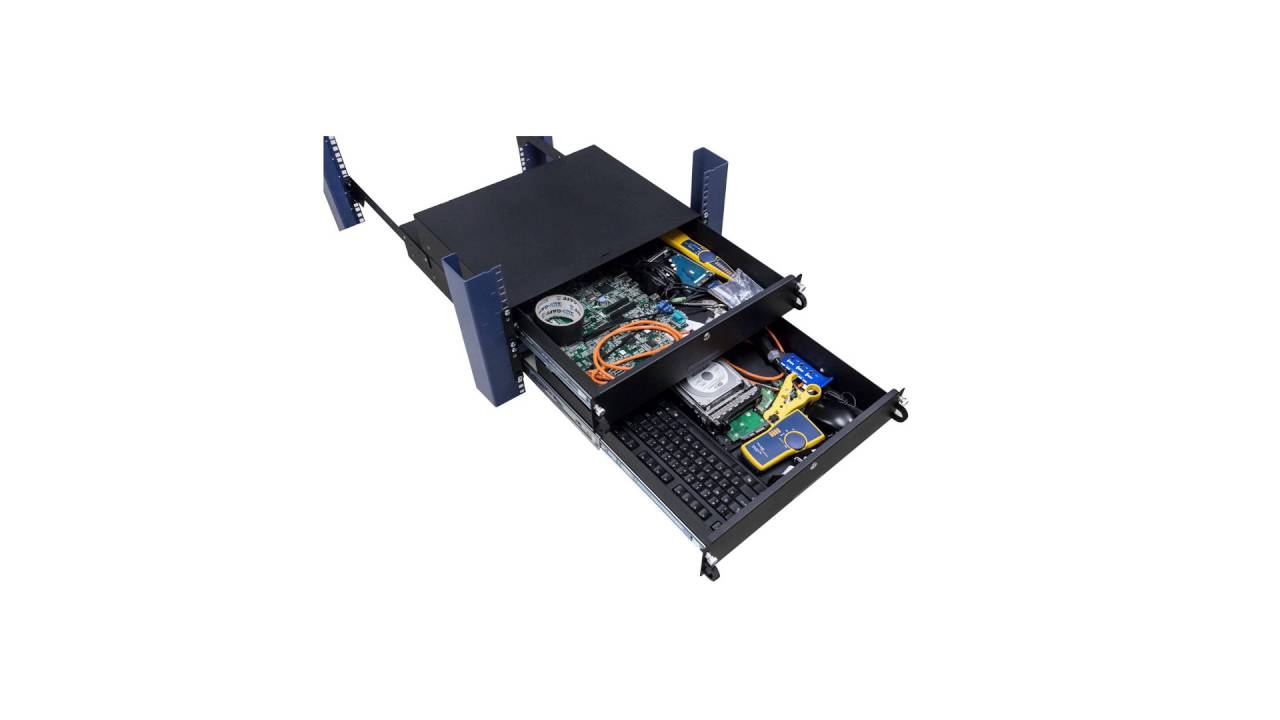
The RackSolutions 18″Server Rack Drawer is one of the largest drawers for a server rack on the market. These are available in 2U, 3U, and 4U size options. See more info here https://www.racksolutions.com/lockable-rack-drawer-deep.html .
source
Technology
It looks like Motorola is fixing its software update problem
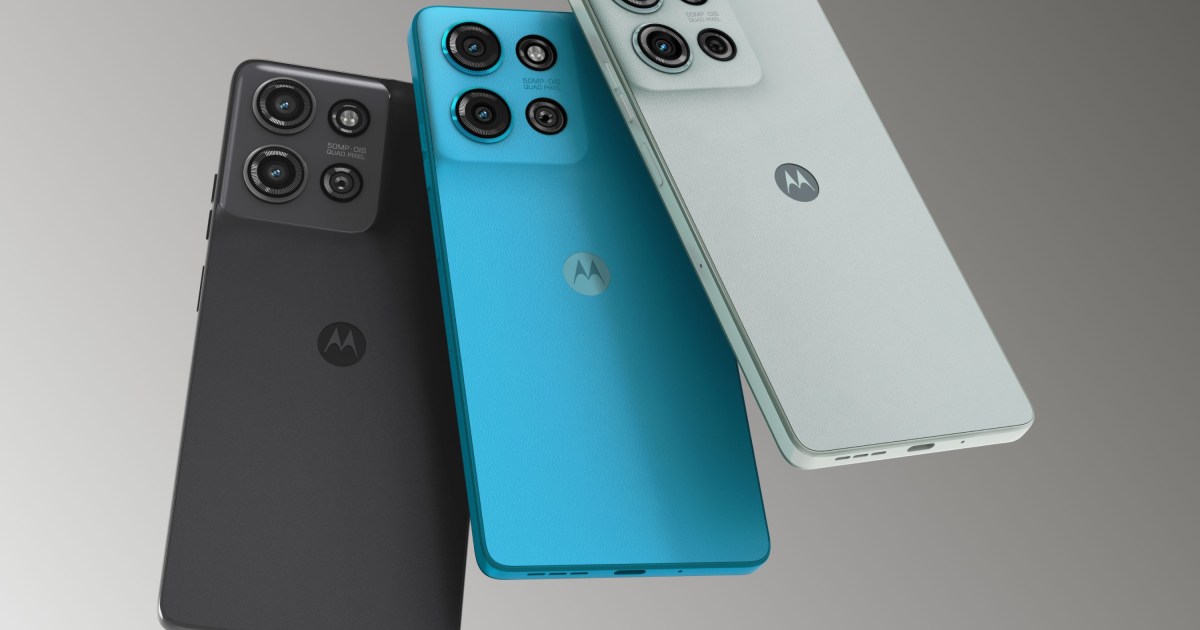
Motorola may be catching up to companies like Samsung and Google regarding the number of years of Android updates it provides for its smartphones. A new Motorola phone could come with five years of updates, and it represents the second Motorola phone to do so in as many months.
The recently announced Motorola Moto G75 will come with five Android OS upgrades and six years of security patches. By our count, this would mean that users will be able to update their phone to at least Android 19, considering that the Moto G75 ships with Android 14. Last month, it was announced that the Motorola Edge 50 Neo would include five years of OS upgrades and security patches.
While five years of updates isn’t as many as the seven years that companies like Samsung and Google promised, it still represents a significant increase from what Motorola had previously offered.
Motorola confirms this update guarantee on its product page for the Moto G75, writing, “Keep up with the latest version of Android by getting five OS upgrades—and six years of security updates—guaranteed through 2029.”

The Motorola Moto G75 is a mid-range smartphone with impressive features at its price point. It includes a Qualcomm Snapdragon 6 Gen 3 chipset, a 6.78-inch Full HD+ LCD with a 120Hz refresh rate, and support for expandable storage via a microSD card of up to 1TB.
The new phone also boasts a 50-megapixel main primary with OIS and Quad Pixel technology and a 5,000mAh battery that supports 30W TurboPower wired and 15W wireless charging.
The new phone is available in Charcoal Grey, Aqua Blue, and Succulent Green. The Charcoal Grey model features a matte-finished back cover, while the Aqua Blue and Succulent Green models have vegan leather rear panels.
It looks like a very competent budget phone, though the real interest lies in its update policy. This is an area Motorola has long struggled with, and while it remains to be seen if the company actually makes good on this promise, it’s a very encouraging step in the right direction.
Motorola has not yet announced the pricing and availability details for the Moto G75.
Servers computers
Open Rack Post 20U – Fleksibilitas dan Efisiensi dalam Satu Rak! 💥
Technology
How to shoot Macro Photos and Videos on iPhone 16

Macro photography got a pretty big upgrade on the iPhone 16 Pro and Pro Max this year, with Apple upgrading the ultrawide sensor to a 48-megapixel lens. This is adding more details into your macro shot, which is really important, seeing as you are very close to the object when shooting in macro and thus blocking out some of the light. So, quadrupling the details is a big deal.
You can shoot macro photos and videos across the entire iPhone 16 lineup (that’s iPhone 16, iPhone 16 Plus, iPhone 16 Pro and iPhone 16 Pro Max), but it will look better on the Pro models, since the iPhone 16 and iPhone 16 Plus are still using the older 12-megapixel sensor. In this article, we’re going to aim to show you how you can take a macro shot or video with the iPhone 16.
How to shoot Macro Photos and Videos
To get started, open the Camera app on your iPhone 16, iPhone 16 Plus, iPhone 16 Pro or iPhone 16 Pro Max.
Next, move as close to the subject you want to take a macro photo or video or, until the Macro Control icon appears. This will appear as a flower icon in the corner.

Move back and forth until the object is in focus correctly. For instance, if it is still blurry, move back a bit.
Once you’ve framed your picture properly, go ahead and snap your photo or press record.
Keep in mind that when using Macro, the iPhone is using the ultrawide camera sensor. You can also get as close as 2cm to your object. For those of us in the US, that’s less than an inch. Sometimes, it’s better not to use the macro option, which you can tap the Macro Control button in the corner to turn it off. But with this turned off, you will need to back up from the object to take a picture that is not blurry.
And that’s macro on the iPhone 16.
Technology
The best deals we could find ahead of the October Big Deal Days sale

Amazon Prime Big Deal Days is back this year, returning on October 8 and 9. The “fall Prime Day” of sorts has served as the online retailer’s unofficial kickoff to the holiday shopping season for the past few years.
We expect most of the deals to be Prime exclusives, meaning you must be an active Prime subscriber to get the discounts. There are always a couple of deals available for everyone, though, so it’s worth perusing Amazon’s site even if you don’t pay for Prime. It’s also worth doing so now because we’ve found a number of solid early Prime Day deals already available. These are the best of the bunch; we’ll be updating this post regularly in the lead-up to October Prime Day, so check back for the latest deals.
Prime Day deals: Engadget’s top picks
Prime Day deals on Apple gear
While Apple deals are few and far between right now, you can save a bit on the new AirPods 4. AirTags have a slight discount as well, both in single and multi-packs.
Prime Day deals on Amazon devices
It’s a safe bet that we’ll see even more Amazon gear discounted on October Prime Day, but for now, you can snag a Fire tablet on sale, as well as Ring and Blink security cameras for much cheaper than usual.
-
Kindle Paperwhite Signature Essentials bundle for $203 ($55 off): This bundle includes one of the best Kindles you can get right now, along with its fabric cover and wireless charging pad. This is the lowest price we’ve seen all year on this trio.
-
Amazon Fire TV Stick 4K Max for $35 ($25 off): Amazon’s most powerful Fire TV dongle supports 4K, HDR content and Dolby Vision, plus Wi-Fi 6E and Dolby Atmos audio. A number of other Fire TV devices are on sale right now, too, including the Fire TV Stick Lite for only $18.
-
Amazon Echo Show 5 + TP-Link Tapo Smart Light Bulb for $50 ($65 off): This bundle deal knocks 56 percent off a duo that includes one of our favorite compact smart displays and a smart light bulb that can be controlled via Alexa voice commands.
-
Blink Outdoor 4 + Echo Show 5 bundle for $60 ($130 off): This Prime-exclusive bundle gives you a one-camera Blink system that can be used indoors or outdoors along with an Echo Show 5, which you can use to see camera feeds just by using Alexa voice commands.
-
Blink Outdoor 4 + Blink Mini 2 bundle for $50 ($90 off): It’s almost a guarantee that Blink security systems will be on sale for Prime Day(s) and this time is no different. This bundle is 64 percent off, and there are a bunch of other bundles on sale that include cameras, video doorbells and more.
-
Ring pan and tilt security camera for $50 ($30 off): This security camera joined the Ring lineup only a few months ago, and this is the best price we’ve seen on it. It’s part of a larger Ring sale that discounts home security gear by up to 50 percent.
-
Amazon Fire HD 10 tablet for $75 ($65 off): One of the more advanced tablets in Amazon’s lineup, the HD 10 has a 1080p screen, an octa-core processor, up to 64GB of storage and a 13-hour battery life.
-
Amazon Fire HD 8 tablet for $55 ($75 off): This is more than half off Amazon’s 8-inch slab that we consider to be a good couch device, or a first-time tablet for a child. It joins a few other Amazon tablets that are discounted right now.
Prime Day deals on tech
Early Prime Day deals on tech include discounts on power banks, webcams, smart plugs and more.
Streaming subscription deals
While these discounts aren’t technically October Prime day tech deals, we’d be remiss not to mention them. While sales on streaming services are becoming more common, there isn’t as much rhyme or reason to them as there is to, say, Amazon’s Prime Day sale cycle. That said, if you see a discount on a service you’ve been meaning to try, it’s worthwhile to jump on it.
Everything you need to know about October Prime Day 2024
When is October Prime Day 2024?
October Prime Day will be held on October 8 and 9 this year.
What is October Prime Day?
October Prime Day is a members-only sale event run by Amazon in which the online retailer has thousands of sales on its site that are exclusively available to those with an active Prime members.
How long is October Prime Day?
October Prime Day will last two full days.
What is on sale for Amazon Prime Big Deal Days?
Most October Prime Day deals will not be revealed until the days of the event. However, in years past, we’ve seen everything from clothing to household essentials to outdoor gear go on sale during this event. Engadget cares most about tech deals, and in past fall Prime Days, we’ve seen things like phones, tablets, headphones, earbuds, robot vacuums, smart home gear and more receive deep discounts.
Do I need an Amazon Prime membership to shop Prime Day deals?
Yes, because most deals will be Prime exclusives. However, there are always a few decent deals available to all Amazon shoppers, so it’s worth checking out Amazon’s site during October Prime Day to see where you can save even if you don’t pay for Prime.
Expired early Prime Day deals
-
Apple 24-inch iMac (M3) for $1,100 ($200 off):The discount plus clippable coupon bring the final price for thisApple desktopdown to the lowest we’ve seen. -
Apple Magic Mouse (black) for $85 ($15 off): Thewhite versionof Apple’s popular accessory is still cheaper at $68, but the black colorway rarely goes on sale. Both mice pair quickly and are relatively light with responsive touch gestures. -
Apple iPad Air (13-inch) for $720 ($80 off):The large model ofour favorite iPadreturns to one of its frequent sale prices. It’s about $20 more than its record low, but it’s still a good deal if you’ve been eyeing the 13-inch Air. -
Apple Pencil (1st gen) for $69 ($30 off): If you have a 10th-gen iPad or older, this is the stylus to get. We’ve seen this discount for a couple of weeks now, but it’s still $10 below the average sale price. It’s also discounted atWalmart. -
Samsung Pro Plus microSD card for $100 ($20 off): This newly released, 1TB variant is down to its best price yet. The Pro Plus is the top pick in our guide to thebest microSD cards. -
Beats Fit Pro earbuds for $159 ($41 off): Our overall favorite pair ofearbuds for runningare on sale for $41 off. They’ve hit this price point often over the past few months, but it’s a decent discount on buds we found to be comfortable with a secure fit and great audio quality. -
Beats Studio Buds for $99 ($51 off):They’re atad oldat this point, but the Studio Buds remain a decent buy at under $100. -
Amazon Echo Show 5 + Sengled smart light bulb bundle for $60 ($50 off):This bundle gives you one of our favoritesmart displays(which makes an excellent alarm clock) and a top pick in ourbest smart light bulbsguide at a 45-percent discount. -
iRobot Roomba Vac robot vacuum for $170 ($80 off):This affordable robo-vac is only $10 more than it was during July Prime Day right now, making it an even better option if you want a robot vacuum without spending a ton. -
8BitDo Ultimate C wired gaming controller for $15 ($5 off):Now at $1 cheaper than it was during Prime Day in July, this 8BitDo accessory is an even better option for PC gamers or folks looking for a more comfortable Steam Deck controller. -
ASTRO Gaming A40 TR wired gaming headset for $100 ($30 off): Our pick for thebest gaming headsetis $30 off, a discount we’ve seen a few times this year. We found these to be comfortable with better sound than many headsets, but the mic performance is only OK. -
Anker 633 10K magnetic power bank for $40 ($40 off):This MagSafe-compatible charging bank has a built-in kickstand for propping up your iPhone, plus a 20W USB-C port for high-speed, wired charging. -
Anker MagSafe Charger Pad for $19.19 ($4.80 off):This Qi2 charging pad is back on sale for its all-time-low price, and it works with the latest iPhone 16 handsets. -
Anker Prime Power Bank 200W 20K with 100W charging base for $140 ($45 off):The top premium pick in ourbest power banksguide, this 20K brick can recharge most mobile devices and has a handy screen that shows you the power flowing out of it, as well as the remaining charge. -
Elgato Stream Deck+ for $170 ($30 off):Combine the discount with the clippable coupon to get a record-low price on this upgraded version of the standard Stream Deck. -
TP-Link AC1200 WiFi Extender for $20 ($30 off): Our top budget pick in ourbest Wi-Fi extendersguide is more than half off right now. While not a rare deal, it’s still a record-low price on a handy device that could help eliminate dead zones around your home. -
Amazon Fire TV Stick 4K Max for $40 ($20 off): An often recurring sale, this discount is only $5 more than the record low. In addition to streaming shows, we like it as aretro gaming emulatorand it even lets you play current games through XBox Game Pass cloud gaming. -
Cosori 9-in-1 air frier for $90 ($30 off):This newer air fry from Cosori has nine preset cooking modes and a six-quart capacity that makes it just the right size to cook a good amount of food without taking up too much space on most countertops. -
Samsung Pro Plus microSD card (512GB) with adapter for $30 ($54 off):Now 64 percent off, this high-capacitymicroSD cardis a great buy for anyone who needs extra storage for their camera, tablet or Nintendo Switch (or other handheld gaming console). -
Google Pixel Buds A-Series for $64 ($35 off):This is one of the best prices we’ve seen on Google’s budget-friendly wireless earbuds, whichwe praisedfor their solid sound quality, deep Google Assistant integration and small, comfortable design. -
Beats Studio Pro x Kim Kardashian headphones + 2 years of AppleCare+ for $279 ($100 off):If you’re really into the muted colors in this collection, this is one of the best deals we’ve seen on Beats’ pro-level headphones with AppleCore+ protection. -
Apple Watch Ultra 2 for $689 ($110 off):This is a record-low price on the Ultra 2, which remains Apple’s most premium smartwatch and the one best for adventurers, ultramarathoners and the like. -
Google Pixel Buds Pro 2 + $30 Amazon gift card for $229:Thebrand new Pixel Budsthat are a solid choice for Pixel phone owners include a free $30 Amazon gift card in this bundle. -
Google Pixel 8a smartphone for $399 ($100 off):If you’re looking for an Android phone with a ton of advanced features and a reasonable price tag, the Pixel 8a is thebest midrange smartphoneyou can get right now. -
Apple iPad (10th gen) for $299 ($50 off): The base iPad didn’t receive a refresh this year (yet), but Apple did cut the price to $349. It’s still selling for a record low right now. -
Apple Pencil (USB-C) for $69 ($10 off):This stylus is amore affordable versionof the new “pro” Pencil, and it works with most new iPads. -
iRobot Roomba Vacuum and Mop Combo for $206 ($69 off):This Roomba can vacuum and mop floors all in one go, and it will automatically return to its charging base when it needs more juice.
Follow @EngadgetDeals on Twitter for the latest tech deals and buying advice in the lead up to October Prime Day 2024.
-

 Womens Workouts1 week ago
Womens Workouts1 week ago3 Day Full Body Women’s Dumbbell Only Workout
-

 Technology2 weeks ago
Technology2 weeks agoWould-be reality TV contestants ‘not looking real’
-

 Science & Environment2 weeks ago
Science & Environment2 weeks agoHyperelastic gel is one of the stretchiest materials known to science
-

 Science & Environment2 weeks ago
Science & Environment2 weeks agoHow to wrap your mind around the real multiverse
-

 Science & Environment2 weeks ago
Science & Environment2 weeks ago‘Running of the bulls’ festival crowds move like charged particles
-

 News1 week ago
News1 week agoOur millionaire neighbour blocks us from using public footpath & screams at us in street.. it’s like living in a WARZONE – WordupNews
-

 Science & Environment2 weeks ago
Science & Environment2 weeks agoHow to unsnarl a tangle of threads, according to physics
-

 Science & Environment2 weeks ago
Science & Environment2 weeks agoMaxwell’s demon charges quantum batteries inside of a quantum computer
-

 Science & Environment2 weeks ago
Science & Environment2 weeks agoSunlight-trapping device can generate temperatures over 1000°C
-

 Science & Environment2 weeks ago
Science & Environment2 weeks agoITER: Is the world’s biggest fusion experiment dead after new delay to 2035?
-

 Science & Environment2 weeks ago
Science & Environment2 weeks agoLiquid crystals could improve quantum communication devices
-

 Science & Environment2 weeks ago
Science & Environment2 weeks agoPhysicists are grappling with their own reproducibility crisis
-

 Science & Environment2 weeks ago
Science & Environment2 weeks agoQuantum ‘supersolid’ matter stirred using magnets
-

 News2 weeks ago
News2 weeks agoYou’re a Hypocrite, And So Am I
-

 Science & Environment2 weeks ago
Science & Environment2 weeks agoQuantum forces used to automatically assemble tiny device
-

 Sport2 weeks ago
Sport2 weeks agoJoshua vs Dubois: Chris Eubank Jr says ‘AJ’ could beat Tyson Fury and any other heavyweight in the world
-

 Science & Environment2 weeks ago
Science & Environment2 weeks agoWhy this is a golden age for life to thrive across the universe
-

 Science & Environment2 weeks ago
Science & Environment2 weeks agoNuclear fusion experiment overcomes two key operating hurdles
-

 Science & Environment2 weeks ago
Science & Environment2 weeks agoCaroline Ellison aims to duck prison sentence for role in FTX collapse
-

 Science & Environment2 weeks ago
Science & Environment2 weeks agoTime travel sci-fi novel is a rip-roaringly good thought experiment
-

 Science & Environment2 weeks ago
Science & Environment2 weeks agoLaser helps turn an electron into a coil of mass and charge
-

 Science & Environment2 weeks ago
Science & Environment2 weeks agoNerve fibres in the brain could generate quantum entanglement
-

 News2 weeks ago
News2 weeks agoIsrael strikes Lebanese targets as Hizbollah chief warns of ‘red lines’ crossed
-

 CryptoCurrency2 weeks ago
CryptoCurrency2 weeks agoCardano founder to meet Argentina president Javier Milei
-

 Science & Environment1 week ago
Science & Environment1 week agoMeet the world's first female male model | 7.30
-

 Womens Workouts1 week ago
Womens Workouts1 week agoBest Exercises if You Want to Build a Great Physique
-

 Science & Environment2 weeks ago
Science & Environment2 weeks agoWhy we need to invoke philosophy to judge bizarre concepts in science
-

 CryptoCurrency2 weeks ago
CryptoCurrency2 weeks agoBitcoin miners steamrolled after electricity thefts, exchange ‘closure’ scam: Asia Express
-

 CryptoCurrency2 weeks ago
CryptoCurrency2 weeks agoDZ Bank partners with Boerse Stuttgart for crypto trading
-

 CryptoCurrency2 weeks ago
CryptoCurrency2 weeks agoEthereum is a 'contrarian bet' into 2025, says Bitwise exec
-

 Womens Workouts1 week ago
Womens Workouts1 week agoEverything a Beginner Needs to Know About Squatting
-

 News1 week ago
News1 week agoFour dead & 18 injured in horror mass shooting with victims ‘caught in crossfire’ as cops hunt multiple gunmen
-

 Womens Workouts1 week ago
Womens Workouts1 week ago3 Day Full Body Toning Workout for Women
-

 Science & Environment2 weeks ago
Science & Environment2 weeks agoA slight curve helps rocks make the biggest splash
-

 News2 weeks ago
News2 weeks ago▶️ Media Bias: How They Spin Attack on Hezbollah and Ignore the Reality
-

 Science & Environment2 weeks ago
Science & Environment2 weeks agoQuantum time travel: The experiment to ‘send a particle into the past’
-

 CryptoCurrency2 weeks ago
CryptoCurrency2 weeks agoDorsey’s ‘marketplace of algorithms’ could fix social media… so why hasn’t it?
-

 CryptoCurrency2 weeks ago
CryptoCurrency2 weeks agoRedStone integrates first oracle price feeds on TON blockchain
-

 CryptoCurrency2 weeks ago
CryptoCurrency2 weeks agoBitcoin bulls target $64K BTC price hurdle as US stocks eye new record
-

 CryptoCurrency2 weeks ago
CryptoCurrency2 weeks agoLow users, sex predators kill Korean metaverses, 3AC sues Terra: Asia Express
-

 Sport2 weeks ago
Sport2 weeks agoUFC Edmonton fight card revealed, including Brandon Moreno vs. Amir Albazi headliner
-

 CryptoCurrency2 weeks ago
CryptoCurrency2 weeks agoBlockdaemon mulls 2026 IPO: Report
-

 News2 weeks ago
News2 weeks agoBrian Tyree Henry on voicing young Megatron, his love for villain roles
-

 CryptoCurrency2 weeks ago
CryptoCurrency2 weeks agoCoinbase’s cbBTC surges to third-largest wrapped BTC token in just one week
-

 Travel1 week ago
Travel1 week agoDelta signs codeshare agreement with SAS
-

 Politics6 days ago
Politics6 days agoHope, finally? Keir Starmer’s first conference in power – podcast | News
-

 Science & Environment2 weeks ago
Science & Environment2 weeks agoBeing in two places at once could make a quantum battery charge faster
-

 Science & Environment2 weeks ago
Science & Environment2 weeks agoA new kind of experiment at the Large Hadron Collider could unravel quantum reality
-

 Science & Environment2 weeks ago
Science & Environment2 weeks agoHow one theory ties together everything we know about the universe
-

 Science & Environment2 weeks ago
Science & Environment2 weeks agoFuture of fusion: How the UK’s JET reactor paved the way for ITER
-

 Science & Environment2 weeks ago
Science & Environment2 weeks agoHow do you recycle a nuclear fusion reactor? We’re about to find out
-

 Science & Environment2 weeks ago
Science & Environment2 weeks agoTiny magnet could help measure gravity on the quantum scale
-

 CryptoCurrency2 weeks ago
CryptoCurrency2 weeks agoCrypto scammers orchestrate massive hack on X but barely made $8K
-

 CryptoCurrency2 weeks ago
CryptoCurrency2 weeks ago‘No matter how bad it gets, there’s a lot going on with NFTs’: 24 Hours of Art, NFT Creator
-

 CryptoCurrency2 weeks ago
CryptoCurrency2 weeks agoSEC asks court for four months to produce documents for Coinbase
-
Business2 weeks ago
How Labour donor’s largesse tarnished government’s squeaky clean image
-

 Technology2 weeks ago
Technology2 weeks agoiPhone 15 Pro Max Camera Review: Depth and Reach
-

 News2 weeks ago
News2 weeks agoBrian Tyree Henry on voicing young Megatron, his love for villain roles
-

 Womens Workouts2 weeks ago
Womens Workouts2 weeks agoHow Heat Affects Your Body During Exercise
-

 Womens Workouts2 weeks ago
Womens Workouts2 weeks agoKeep Your Goals on Track This Season
-

 Science & Environment2 weeks ago
Science & Environment2 weeks agoUK spurns European invitation to join ITER nuclear fusion project
-

 News2 weeks ago
News2 weeks agoChurch same-sex split affecting bishop appointments
-

 Technology2 weeks ago
Technology2 weeks agoFivetran targets data security by adding Hybrid Deployment
-

 CryptoCurrency2 weeks ago
CryptoCurrency2 weeks ago$12.1M fraud suspect with ‘new face’ arrested, crypto scam boiler rooms busted: Asia Express
-

 CryptoCurrency2 weeks ago
CryptoCurrency2 weeks agoDecentraland X account hacked, phishing scam targets MANA airdrop
-

 CryptoCurrency2 weeks ago
CryptoCurrency2 weeks agoCertiK Ventures discloses $45M investment plan to boost Web3
-

 CryptoCurrency2 weeks ago
CryptoCurrency2 weeks agoBeat crypto airdrop bots, Illuvium’s new features coming, PGA Tour Rise: Web3 Gamer
-

 CryptoCurrency2 weeks ago
CryptoCurrency2 weeks agoTelegram bot Banana Gun’s users drained of over $1.9M
-

 CryptoCurrency2 weeks ago
CryptoCurrency2 weeks agoVonMises bought 60 CryptoPunks in a month before the price spiked: NFT Collector
-

 CryptoCurrency2 weeks ago
CryptoCurrency2 weeks ago‘Silly’ to shade Ethereum, the ‘Microsoft of blockchains’ — Bitwise exec
-

 CryptoCurrency2 weeks ago
CryptoCurrency2 weeks agoEthereum falls to new 42-month low vs. Bitcoin — Bottom or more pain ahead?
-
Business2 weeks ago
Thames Water seeks extension on debt terms to avoid renationalisation
-
Politics2 weeks ago
‘Appalling’ rows over Sue Gray must stop, senior ministers say | Sue Gray
-

 Science & Environment1 week ago
Science & Environment1 week agoCNN TÜRK – 🔴 Canlı Yayın ᴴᴰ – Canlı TV izle
-

 News1 week ago
News1 week agoWhy Is Everyone Excited About These Smart Insoles?
-

 News5 days ago
News5 days agoUS Newspapers Diluting Democratic Discourse with Political Bias
-

 Politics2 weeks ago
Politics2 weeks agoTrump says he will meet with Indian Prime Minister Narendra Modi next week
-

 Technology2 weeks ago
Technology2 weeks agoCan technology fix the ‘broken’ concert ticketing system?
-

 Health & fitness2 weeks ago
Health & fitness2 weeks agoThe secret to a six pack – and how to keep your washboard abs in 2022
-

 Science & Environment2 weeks ago
Science & Environment2 weeks agoSingle atoms captured morphing into quantum waves in startling image
-

 Science & Environment2 weeks ago
Science & Environment2 weeks agoHow Peter Higgs revealed the forces that hold the universe together
-

 Science & Environment2 weeks ago
Science & Environment2 weeks agoA tale of two mysteries: ghostly neutrinos and the proton decay puzzle
-

 CryptoCurrency2 weeks ago
CryptoCurrency2 weeks ago2 auditors miss $27M Penpie flaw, Pythia’s ‘claim rewards’ bug: Crypto-Sec
-

 CryptoCurrency2 weeks ago
CryptoCurrency2 weeks agoLouisiana takes first crypto payment over Bitcoin Lightning
-

 CryptoCurrency2 weeks ago
CryptoCurrency2 weeks agoJourneys: Robby Yung on Animoca’s Web3 investments, TON and the Mocaverse
-

 CryptoCurrency2 weeks ago
CryptoCurrency2 weeks ago‘Everything feels like it’s going to shit’: Peter McCormack reveals new podcast
-

 CryptoCurrency2 weeks ago
CryptoCurrency2 weeks agoSEC sues ‘fake’ crypto exchanges in first action on pig butchering scams
-

 CryptoCurrency2 weeks ago
CryptoCurrency2 weeks agoBitcoin price hits $62.6K as Fed 'crisis' move sparks US stocks warning
-

 CryptoCurrency2 weeks ago
CryptoCurrency2 weeks agoVitalik tells Ethereum L2s ‘Stage 1 or GTFO’ — Who makes the cut?
-

 News2 weeks ago
News2 weeks agoBrian Tyree Henry on his love for playing villains ahead of “Transformers One” release
-

 Womens Workouts2 weeks ago
Womens Workouts2 weeks agoWhich Squat Load Position is Right For You?
-

 News1 week ago
News1 week agoBangladesh Holds the World Accountable to Secure Climate Justice
-

 TV1 week ago
TV1 week agoCNN TÜRK – 🔴 Canlı Yayın ᴴᴰ – Canlı TV izle
-

 Technology1 week ago
Technology1 week agoRobo-tuna reveals how foldable fins help the speedy fish manoeuvre
-

 Science & Environment6 days ago
Science & Environment6 days agoX-rays reveal half-billion-year-old insect ancestor
-

 Technology2 weeks ago
Technology2 weeks agoIs carbon capture an efficient way to tackle CO2?
-

 Health & fitness2 weeks ago
Health & fitness2 weeks agoThe maps that could hold the secret to curing cancer
-

 Science & Environment2 weeks ago
Science & Environment2 weeks agoThe physicist searching for quantum gravity in gravitational rainbows
-

 CryptoCurrency2 weeks ago
CryptoCurrency2 weeks agoHelp! My parents are addicted to Pi Network crypto tapper
-

 CryptoCurrency2 weeks ago
CryptoCurrency2 weeks agoCZ and Binance face new lawsuit, RFK Jr suspends campaign, and more: Hodler’s Digest Aug. 18 – 24

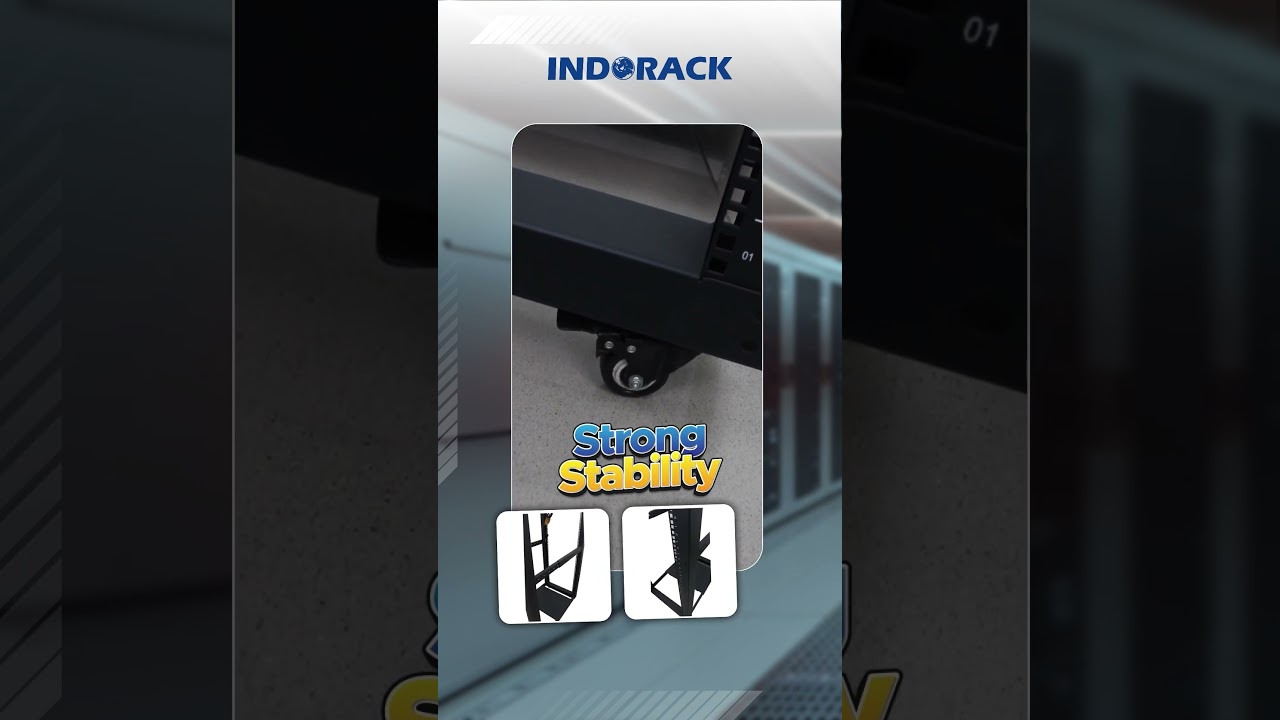
You must be logged in to post a comment Login